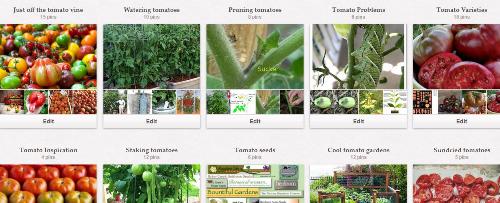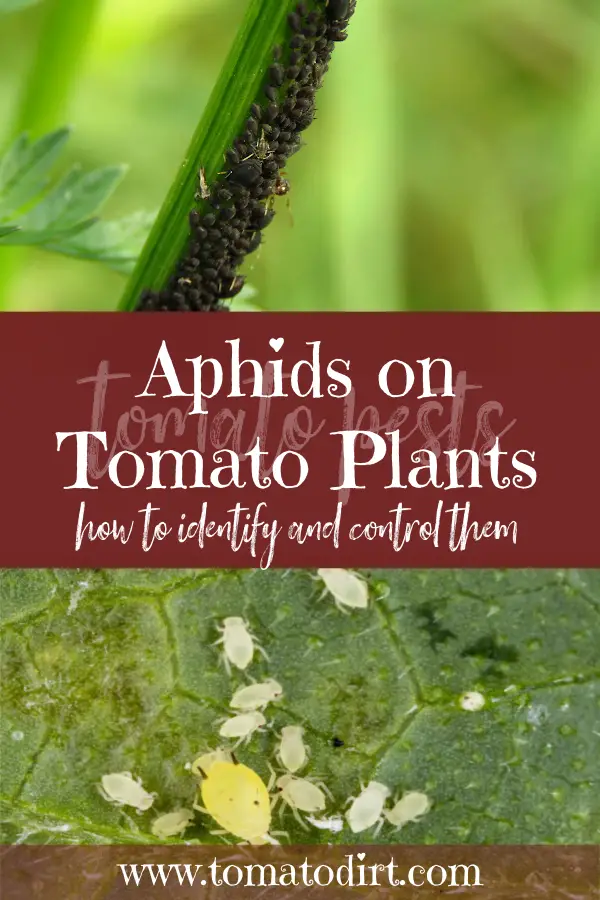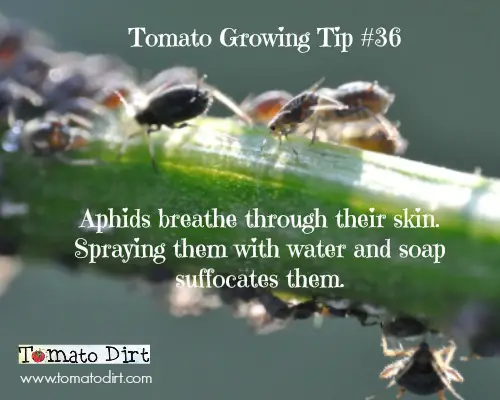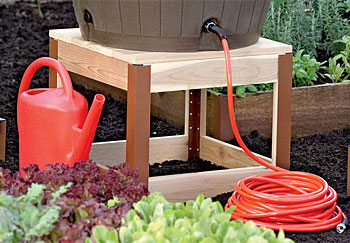| Back to Back Issues Page | ||||||||
 |
||||||||
|
[Tomato Dirt #258] Be on the lookout for aphids on tomato plants June 16, 2022 |
||||||||
Tomato Dirt Newsletter
|
 |
Slugs … deer … beetles. Or is it tomato rot or blight that’s attacking your crops?
Identifying the problem is the first step in finding an earth-friendly way to reduce — or even eliminate — the damage caused by garden pests and diseases.
Our friends at Gardener’s Supply have created a directory of garden pests to help you identify your gardener’s invaders.
And GS expert gardeners also has a helpful list of diseases to look out for, including more than 80 quick tutorials to show you what to do when your plants are under attack.
Hop on over to the directory of garden pests or the listing of 80+ quick tutorials to discover your garden’s problems. And bookmark those pages for later!
Tomato Dirt is on Pinterest
 |
FEATURE: Be on the Lookout for Aphids on Tomato Plants
 |
Aphids on tomato plants can stunt your crop and cause leaves to curl. That’s one good reason they’re also called “plant lice.
Of 4400 aphid species, 250 are harmful to plants, which is why you may see white aphids on tomato plants … black aphids on tomato plants … red aphids on tomato plants … non-flying aphids along with winged aphids on tomato plants.
And, these buggers just won’t quit. Aphids are very prolific. Females can give birth to up to 80 offspring a week. That’s a whole lot of aphid nymph mouths to feed, especially when you don’t want your tomato plant to be part of the aphid nursery. And all those nymph babies can turn into adults in just 7 or 8 days.
The good news is that your tomato plants can recover … (Keep reading)
Best Tips for Growing Tomatoes: Bestseller in 89 Countries
 |
You’ll be able to diagnose pest and disease problems using step by step priceless information, illustrated with 260 full color photos.
Get the book and you’ll also get 6 free bonuses, including the Family Tomato Cookbook and a database of 1300 varieties of tomatoes. More details here.

Tomato Growing Tip: Control Aphids with Water
 |
Image: Tomato Dirt |
Get more tips for growing tomatoes on our Tomato Growing Tips Pinterest board.
How Much Rain Did You Get?
 |
Collecting rainwater for your garden is a smart idea, no matter what your motivation. Plants like rainwater, because it's naturally soft, and free of chlorine and other chemicals. If drought is a problem where you live, collecting rainwater is a good way to deal with watering restrictions. If you're on a municipal water system, you stand to save a considerable amount of money.
Now you can harvest the rain right from your roof and estimate how many gallons of water you can collect, thanks to this nifty rainfall calculator from our good friends at Gardener’s Supply. Just enter your roof measurements and the amount of rainfall and POOF! – you’ve got the number of gallons you can collect to use in your garden.
You’ll find plenty of other handy information on the Rainfall Calculator page, including a rainfall collection supplies list and how-tos. Plus, it’s free. Check it out here.
More about Tomato Pests
That’s it for now. More next time.
Until then, happy gardening!
![]()
Kathy with Tomato Dirt
www.tomatodirt.com
Find us on Facebook!